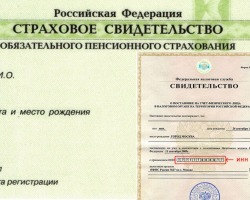This article describes the concept of standardization and unification.
Content
- The concept of unification, typification and standardization of accounting documents, containers, production, products, in construction, office work, trading furniture, preschool educational institution, at the Research Institute: what is it?
- Goals and objectives of standardization and unification
- Structuring, standardization, unification, reproducibility - this: what is it?
- Standardization and unification of the production of cultural images
- Unification and standardization level - indicators, coefficients: how to calculate, requirements, example
- Standardization and unification method
- Unification and standardization: What are GOSTs?
- Research Institute of Standardization and Unification: Areas of Activities
- Details of documents, their unification and standardization
- Video: quality management. Lesson 7. Standardization and certification of products and quality system
Unification and standardization is the establishment of a unique composition and form of management papers and other fixing management functions, or categories of established standards. Read more about these concepts further.
The concept of unification, typification and standardization of accounting documents, containers, production, products, in construction, office work, trading furniture, preschool educational institution, at the Research Institute: what is it?

Unification, standardization and typification of accounting papers is carried out to reduce the number of forms and forms used, as well as to increase the quality indicators of work, reduce the complexity of the processing of papers and achieve the info-compensation of different systems in management functionality.
Work with these accounting functions of containers, production, products, in construction, office work, trading furniture, preschool educational institution, and the research institute includes the following aspects:
- Development of a unique systematic document management. This is usually done by public services that conduct one or another industry.
- The introduction of papers between industries and departments within the republic and industry in terms of document management.
- Conducting papers and classifiers of technical and economic documentation in order to be able to maintain information at a reliable level and develop it in further work.
- The development of sector classifiers. and tech. information that reflect the specifics of a separate area.
The specific purpose of standardization and unification is directly related to a particular area of \u200b\u200bfunctioning, industry, services, type of product or enterprise. All these concepts can concern one object unit as a whole or its individual components of parts, characteristics.
Goals and objectives of standardization and unification

The purpose of the standardization and unification is the resolution of already set tasks, as well as control in a particular area by applying the set norm, rules, currently in force the requirements and characteristics of the goods, containers, production or documentation. The general purpose of standardization is spelled out in the law and this is the protection of the point of view of people and the state regarding the quality of services or products.
The main aspects of the multitasking of standardization and unification include the following points:
- Ensuring the development of scientific and techno. progress.
- Creation of the state. standard of goods, products, production, containers, documents. It is also important to ensure that the indicators when measuring and analyzing the characteristics are reliable and unified.
- Creation of one general document management system, system for searching and transmitting numbers and other information.
- The establishment of proper demand and norms when creating products at the production facility in order to make the procedure economical, as well as ensure the excellent quality of the final product.
- Improvement of the entire system of indicators for product quality.
- Improving the systematization of standards underlying a program that helps to determine the necessary conditions for the design and the production process.
The results of standardization and unification will be reliable after various technological problems in the field of trade, as well as with the help of close assistance to scientific and technical progress and cooperation in certain fields of production.
Structuring, standardization, unification, reproducibility - this: what is it?

In addition to the concept of standardization and unification, in various fields of production, concepts such as structured and reproducibility are used. What is it, read on.
Structure:
- This is the unification of the components of any system into the structure.
- The structure, in turn, is the location of the above components in a certain order and with the presence of stable connections among themselves, ensuring the functioning of this system without failures.
Standardization:
- This is the development and establishment of rules, standards, requirements (standards) that are mandatory for application in the relevant area of \u200b\u200bactivity.
- With the application of standards, any production work is carried out, high -quality and safe products are issued, and environmental condition is carried out.
- Special bodies that have the right to do so are engaged in standardization.
Unification:
- This is the information into a single system of diverse objects that perform the same functions.
- Unification in technology is widely used, for example, in instrumentation, significantly expanding the possibilities of designing, facilitating the assembly and repair of technical means.
Reproducibility:
- This is the degree of proximity of the results of repeated measurements obtained in one sample, but in different conditions (at different times, in different laboratories, on different equipment, different operators).
If you know the definitions of all these concepts, then you can have an idea of \u200b\u200bthe standards, typification of goods and quality control.
Standardization and unification of the production of cultural images
The standardization and unification of the production of cultural images is characteristic of the sphere of culture. Moreover, such a sphere of culture can be:
- Elitist
- Mass
- Individual
- Primitive
As well as in production, in culture, standardization and unification is the establishment of the necessary minimum images, taking into account the development of this industry.
Unification and standardization level - indicators, coefficients: how to calculate, requirements, example

The level of unification and standardization is determined by specific indicators and coefficients. Such indicators characterize the saturation of a unit of one or another sphere or region (products, containers, and so on) with standard and unified, as well as unique components. The component should be understood as details or any assembly units.
The indicators of standardization and unification include the following coefficients:
- Applicability
- Repeatability
- Mutual unification for several types of products
Also, the coefficients can be:
- Unique and created only for one particular product.
- Borrowed. In this case, the coefficient can be original for a particular product, but can also be used in two or more products.
This is how the calculation of the main indicators is performed for assessing the level of standardization and unification - an example and formula:


Patent and legal indicators of the quality of goods and other products are a characterizing link in the degree of patent protection of the released product in our country and abroad. Also, such indicators indicate the level of patent purity of products.
It is worth knowing: In unification and standardization, such indicators are very important, since they characterize the degree of renewal of those. Decisions that were applied in the product. This is an important factor in identifying the degree of competitiveness of products. The requirements for its calculations are high, and they must be carried out strictly according to the formulas.
The calculation of this indicator is performed according to the following formulas:

Standardization and unification method

The very concept of “standardization” includes a set of certain rules and characteristics, for their further use when achieving a specific goal. It includes a number of methods, one of which is the most important - “unification”.
It is worth knowing: The unification method is mainly, this is a certain type of product to a single system. It is suitable for optimizing the type itself, its size, quantity, type of services, or any processes.
The main goal is to minimize the variety of any product, product, service, or process. In addition, this method helps to improve quality, and hence the demand itself increases, and, accordingly, profit.
The unification method is divided into several types:
- Technological type - unification of workflow.
- Design species - unification of the elements themselves.
Tasks:
- Development of parameters of a number of equipment, products, etc.
- The performance of typical products for creating a single group.
- Creating technological processes.
- Optimization of workflow.
Above the text, it was described in detail how work is performed on standardization and unification and all the necessary calculations are given.
Unification and standardization: What are GOSTs?

Unification and standardization are lawyer forms. consolidation of the originality of products and the level of its obligation. There are such types of GOSTs:
- GOST - state standard
- Ost - industry standard
- RST - Republican standard
The use of any of these standards improves the quality of goods, production or documentation. In office work, there are uniform requirements and rules for drawing up documentation. They are established by the state. regulatory acts. It is also a certain form of the standard.
Research Institute of Standardization and Unification: Areas of Activities
The main goals of the creation of this enterprise were the development and improvement of specialized regulatory and technical documentation, where the process of production, verification, use and disposal of certain units of production is streamlined.
Thus, thanks to research institutes of standardization and unification, there is a regular improvement in the quality of products and an increase in the annual production of goods.
The primary types or areas of activity are as follows:
- Assistance in the international division of labor, including active cooperation with foreign standardization enterprises, which includes ISO, ARINC, ASD, etc.
- Creation of innovative materials and technologies for equipment.
- Continuous monitoring of the implementation of new information systems.
Institutes carry out research work, as well as development tests aimed at creating a particular product.
Details of documents, their unification and standardization

The document is understood as material bearer of business information for the exchange of it for public use. For its correct filling, it is necessary to accurately indicate the following document details:
- No. document
- Date
- Contact details (if necessary)
- Legal address or registration address
- TIN
- Bank data, etc.
Such information is mandatory and is called the details of any document.
- The development of the required number of documents, their forms and types is included in the concept of “unification”.
- In accounting, this is expressed in the design of the same type of operations between enterprises and organizations.
- Bringing the sizes of documents to certain categories of standards (state, industry, republican) is their standardization.
- It helps to establish the necessary requirements for paperwork so that the latter have legal force.
It is worth knowing: In document management, standardization is the next link after unification.
Now you know what standardization, unification is and other definitions as products and services. With the help of this knowledge, it’s easy to work with documents, their systematization and typification.







